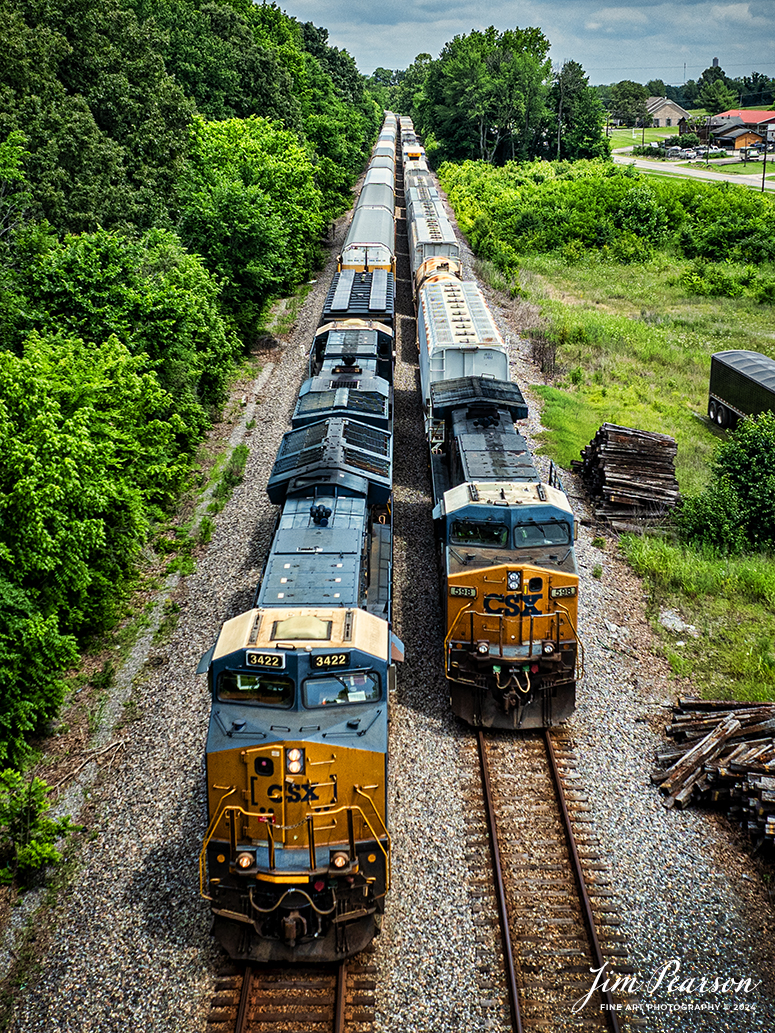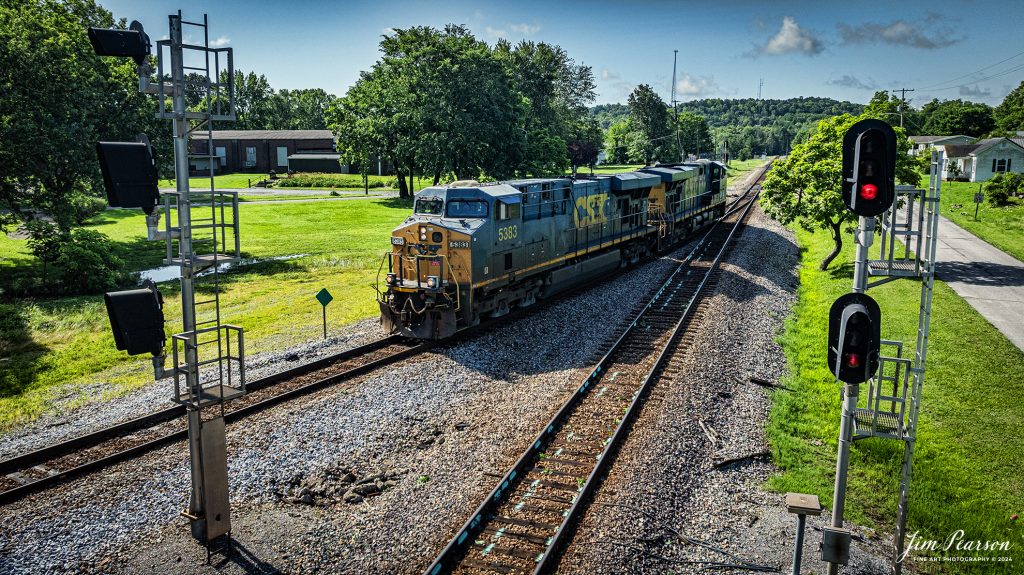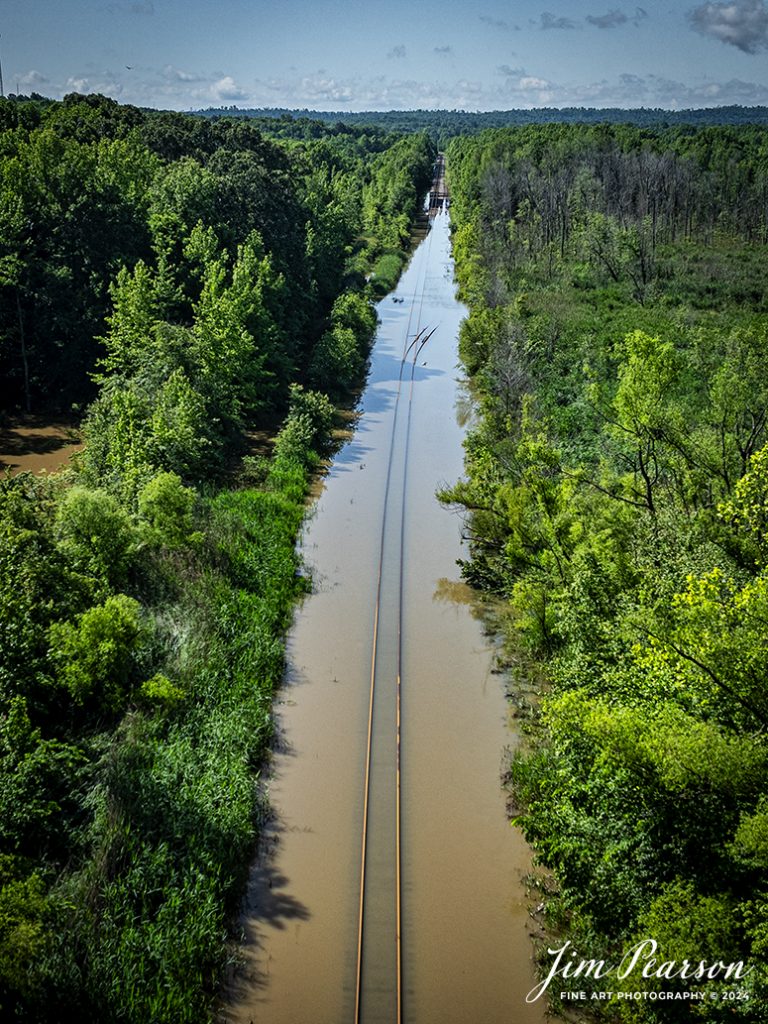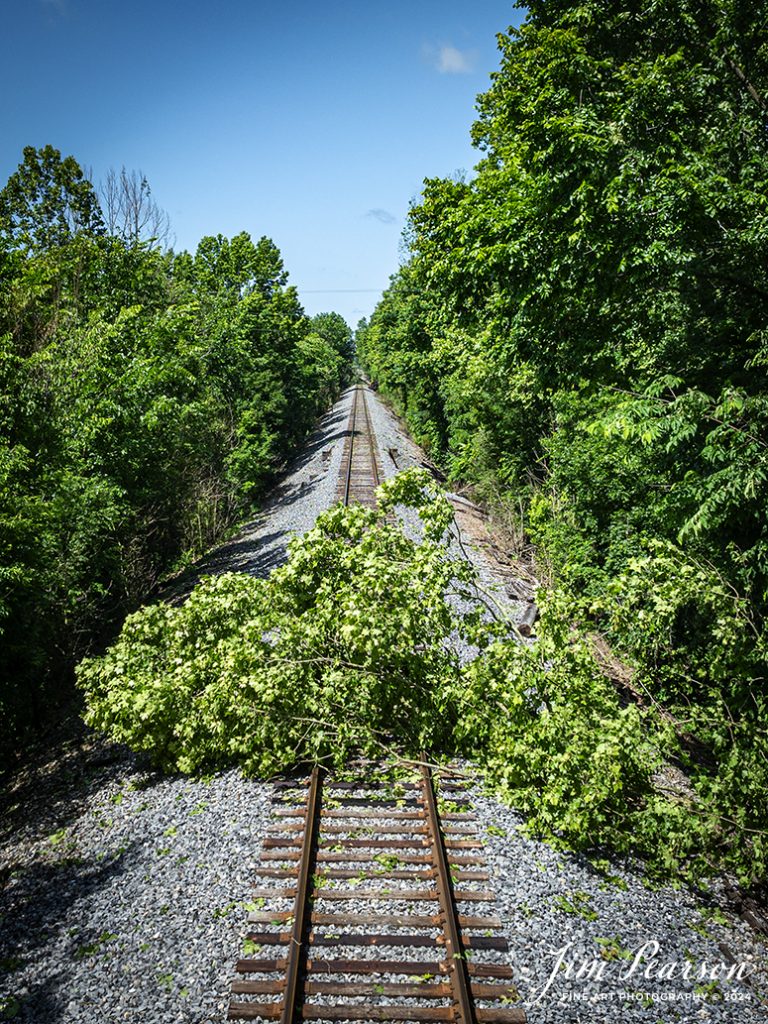Norfolk Southern 49R snakes it’s way along the Emory River as it heads northbound from CP Camp Austin at Oakdale, TN, on the NS CNO&TP (Rathole) Second District on April 29th, 2024.
According to Wikipedia: Oakdale was originally known as “Honeycutt” after an early settler, Allen Honeycutt. In the 1880s, the Cincinnati Southern Railway, which connected Chattanooga and Cincinnati, was built through the area, intersecting the vast system of the East Tennessee, Virginia and Georgia Railroad (later the Southern Railway) at Emory Gap near Harriman. Allen Honeycutt donated land to the railroad for construction of a switching point. In 1892, the name of the town was changed to “Oakdale” after a nearby mining operation.
The stretch of the Cincinnati Southern from Oakdale to Somerset, Kentucky, involves steep grades that were too difficult for normal late-19th and early-20th century steam-powered locomotives, so a railyard was set up at Oakdale where trains were modified to allow them to make the trek north. By the early 1900s, Oakdale had developed into an important railroad town, with a bank, five general stores, a drugstore, a hardware store, three schools, two churches, six secret societies, and a newspaper.
According to American-rails.com, It used to be called the Rathole Division when it was the Southern Railway and is often remembered as a road with relatively flat and tangent main lines due to the region in which it operated. However, the system did feature its share of steep, circuitous main lines such as Saluda Grade in western North Carolina and its famed “Rathole Division” through Kentucky and Tennessee that reached as far north as Cincinnati.
Technically, this stretch of the Southern main line was known as the 2nd District of subsidiary Cincinnati, New Orleans & Texas Pacific (CNO&TP), which was plagued for years by numerous tunnels resulting in its famous nickname by the crews which operated over it.
Over the years the Southern worked to daylight or bypass these obstacles as the route saw significant freight tonnage, a task finally completed during the 1960s. Today, the Rathole remains an important artery in Norfolk Southern’s vast network.
Tech Info: DJI Mavic 3 Classic Drone, RAW, 22mm, f/2.8, 1/3200, ISO 190.


















![Santa Fe 947 leads the way as it climbs upgrade through the Tehachapi Pass in northern California in August of 1995.
According to Wikipedia: Tehachapi Pass (Kawaiisu: Tihachipia, meaning "hard climb") is a mountain pass crossing the Tehachapi Mountains in Kern County, California. Traditionally, the pass marks the northeast end of the Tehachapi’s and the south end of the Sierra Nevada range.
The route is a principal connector between the San Joaquin Valley and the Mojave Desert. The Native American Kitanemuk people used the pass as a trade route before the American settlement of the region in the 19th century. The main line of the former Southern Pacific Railroad opened though the pass in 1876;[4] the tracks are now owned by the Union Pacific Railroad and shared with BNSF Railway as the Mojave Subdivision. U.S. Route 466 was built in the 1930s, and the road is now State Route 58. The Pass is also the route of the planned California High-Speed Rail line.
Tech Notes: Nikon F3 Film Camera, Nikon 300mm, f/stop and shutter speed not recorded
#railroad #railroads #train #trains #bestphoto #railroadengines #picturesoftrains #picturesofrailway #bestphotograph #photographyoftrains #trainphotography #JimPearsonPhotography](http://www.jimpearsonphotography.com/wp-content/uploads/2024/05/WEB-08.1995-SF-947-climbs-the-grade-in-Tehachapi-Pass.jpg)




